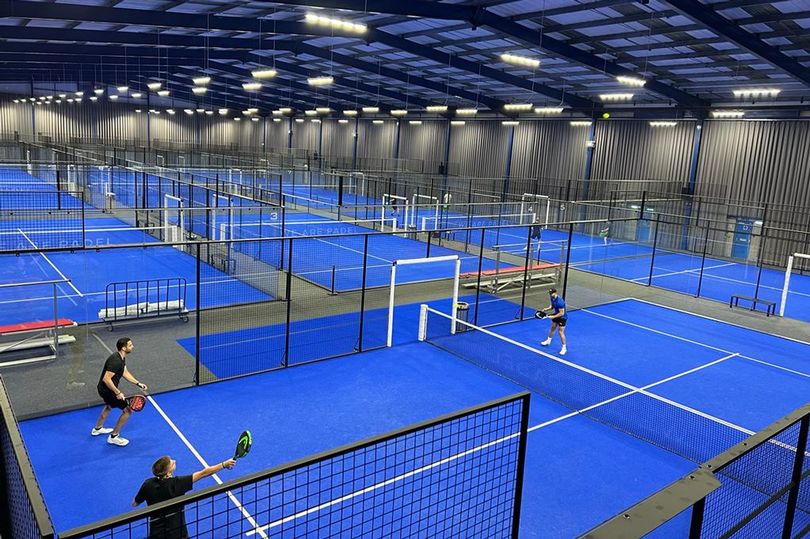The latest developments in tennis technology
5月 05, 2017
Tennis is a notoriously traditional sport and for many passionate fans this is a laudable trait of the game. Change is incremental and almost indistinguishable if scrutinised on a year-by-year basis. Some adjustments have staying power (e.g. Hawk Eye for line calling) and others die out after a couple of years (28” frames, anyone?). That said, the last few years have seen a proliferation of consumer sports technology and tennis has not been immune from the trend.
Looking to advance your game with the help of technology? Here’s a quick recap of some of the latest tennis tech:
In/Out line calling + stats gathering device
Imagine: for the bargain price of $199 USD and the investment of only 45 seconds for calibration, you will never again be faced with another argument over a line call. This is the premise of Always Innovating’s In/Out product which claims to be 99% accurate to a precision of two centimeters and can even detect a let serve (!).
How does it work? The small device you strap onto the net post contains two cameras. When you fire it up the camera scans the court as part of the calibration process. Then, when operational, the AI algorithms monitor ball flight and players get real-time light and sound notifications that indicate whether the ball is in or out. Because the activity is recorded, you can use the device to get a replay of the action if there is any skepticism about a call. The battery lasts for up to 2 hours and you can put the device in either a streaming or recording (to a SD card) setting. In/Out boasts real-time processing and creates maps of where your balls land like the analysis you see on TV. It’s available on both iOS and Android devices.
Full disclosure - we haven’t tried the In/Out product but we think it could be worth buying when it's released later this summer. However, if you like to channel your inner Johnny Mac and on-court arguments get your juices flowing with positive results, maybe this device won’t hit your sweet spot...
Zepp sensors
Whether we’ve realised it or not, sensors have been comprehensively integrated into our daily life in recent years. Getting in on the action, Zepp has created a suite of sensors for different sports including tennis. The bluetooth-enabled technology comes in the form of a plastic square you mount on the butt of your racket and enables 3D and video swing analysis providing you with instant feedback on racket position. Ever wanted to compare you forehand to Roger Federer’s stroke? Now you can. Through the app (which connects to your device), you can track: power, consistency, intensity, racket head speed and the frequency with which you hit your sweet spot. Zepp gets granular on your serve, showing you racket speed, ball speed potential, spin, backswing time and impact time.
At $99, Zepp seems like a bargain for players hungry to troubleshoot their game by crunching data. We are more convinced by some of the features than others - backswing time on the serve isn’t the most useful information unless you are trying to emulate one of your swings that had a great result - but collecting different data has the potential to unearth insights into patterns in your game that you were unaware of. As with all data though, the key thing is knowing what to do with the information.
Babolat Play & Pop
Babolat has focused much more on adding technology to its offering than its major tennis brand peers. It currently has two products on the market and looks to be shortly adding a third called ‘Replay’. According to Babolat, the premise of ‘Play’ which comes in the form of bespoke Pure Drive, Pure Drive Lite or Pure Aero frames, is to provide data on your power, endurance and technique. The built-in tech includes a 6 axis sensor, accelerometer, gyroscope and piezoelectric which track a plethora of items via their app including: spin, impact, activity score and it's able to differentiate among all of your strokes for data collection. Babolat insists that the playability and feel of the frames hasn’t been compromised. The rackets retail at approximately £250 and vary by frame.
Pop costs £70 and takes a different approach with the sensor situated in a wristband rather than built into the racket frame. It tracks almost identical metrics to Play but also includes a PIQ score which shows progress on ‘spin’, ‘speed’ and ‘style’ against a goal akin to the Apple Watch’s activity tracker. Pop also has a challenge feature allowing you to compete against other Pop-wearing friends to see who gets the highest score. Needless to say, I think we all know a tennis-addicted friend who would find this feature compelling!
Pivot
Another product in the sensor domain is Pivot, which combines full-body motion-capture technology and biomechanics analysis. Sounds intense, huh? It is. Unlike Zepp which only requires you to adhere the device to the butt of your racket, Pivot requires you to wear a harness-like contraption which spans from your hands to your shoulders and around your rib cage. This get-up is designed to accurately recreate joint and body movements for analysis. Whether it’s ensuring your strokes aren’t going to cause you injuries over time (definitely a unique selling point for this product versus the others on this list) or comparing your strokes in a session against your ideal reference stroke, the level of biomechanic assessment possible here is substantial. Pivot gives you real-time feedback in the form of a sound notification when your swing matches the reference swing you’ve tagged.
Significantly, Pivot has been created with input from Nick Bolleteri who has provided guides with signature motions and teachings in the ‘motion’ library. For anyone who has always tried to emulate Andre Agassi’s two-handed backhand this aspect of the offer will be especially enticing. Pivot was crowdfunded and is expected to be available in late summer 2017.
QLIPP Smart String Dampners
QLIPP touts itself as the world’s first smart dampener for tennis. With an innovative twist and lock design, QLIPP attaches directly to the strings of any tennis racquet which is intended to provide a more accurate stroke analysis than sensors that adhere to the end of the grip. The sensor measures every part of your stroke, analyzing the spin, speed and sweetspot accuracy of each shot. The data captured by QLIPP is transferred wirelessly to the mobile app (Android or iOS) in real-time. From providing session by session progress tracking to utilizing your smartphone’s camera for video analysis of your strokes, the app can help you identify weak areas to correct and develop better technique. An added bonus? QLIPP has a fitbit-type feature that enables you to monitor how many calories you burn after every hit. With this tracking in place, you won't think twice about chasing down every ball, right?!
QLIPP retails at $109 USD. The bundle includes the sensor, USB charging cable and a carrying case.
PlaySight
PlaySight has been around for a couple of years so many of you have probably given it a go. The installation includes a camera-and-kiosk system which basically turns a regular tennis court into a 'SmartCourt' with features that include line calling, livestreaming, instant multi-angle video replays and detailed statistics about every shot played. Six HD cameras are integrated with advanced image processing and analytical algorithms to capture and log stroke type, ball trajectory, speed and spin, in-depth shot data, player movement and more. It's easy to see how this type of data is useful for both practice drills and match situations. Moreover, being able to see court positioning and movement is a USP for PlaySight versus the products on this list.
PlaySight has an app that allows you to livestream your practices or matches from anywhere, store and manage your video content from all of your SmartCourt sessions, watch and share automatically created highlights and keep track of your statistics, including fitness, shot speed and match stats. Thus, you are empowered to track your progress in different facets of your game to an incredible degree of granularity.
This list is far from exhaustive. What are your go-to tech gadgets and how do they help your performance on the tennis court? Let us know in the comments below.
Also in Tennis Hacks

テニスプレーヤーに最高の贈り物
8月 08, 2025
テニス中毒の親/友達/おねしょ/パートナーにとって理想的なテニスギフトを探していますが、刺激を受けていませんか?私たちは調査を行い、さまざまな価格帯の新鮮なアイデアのリストを思いつきました。オプションには、これまで聞いたことがないかもしれないが、テニスの世界に波を起こすエキサイティングな新しいブランドが含まれます...

The 10 Best Gifts for Padel Players: Padel Bags, Covers & More
8月 05, 2025

The definitive guide to tennis bags for travel
8月 01, 2025
Flying with tennis racket can be a perplexing experience. Each airline has a different policy that may or may not give explicit instructions about your tennis gear. Fear not! We've done extensive research on this topic and provided an overview of the requirements of the major airlines. A little preview? Our Backpack and 24 Hour bag comply with carry on restrictions across the board...
Be the first to hear about new products, sales, give-aways and more...
© 2025 Epirus London.
Shopifyを搭載

